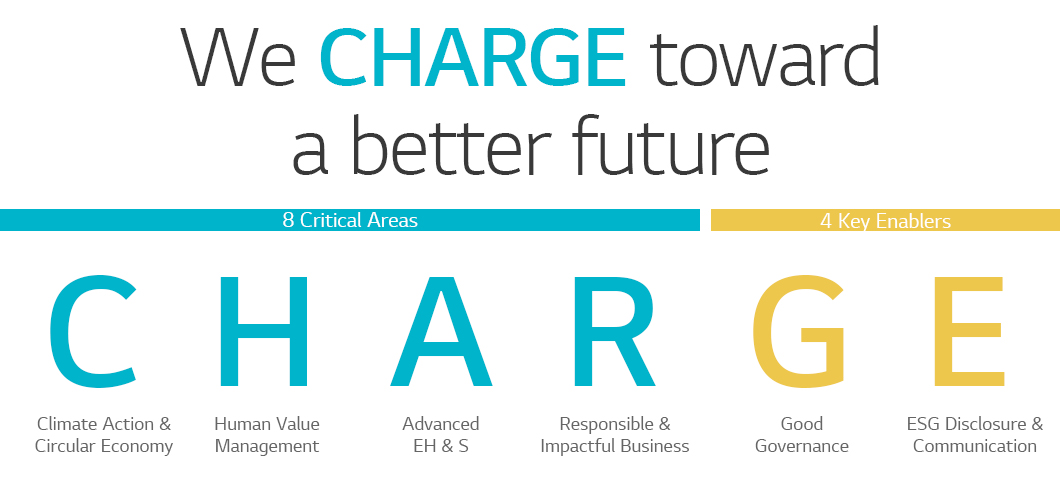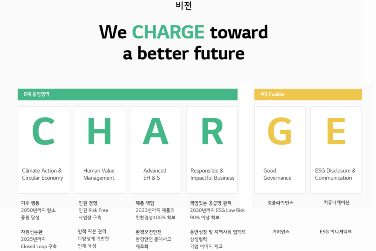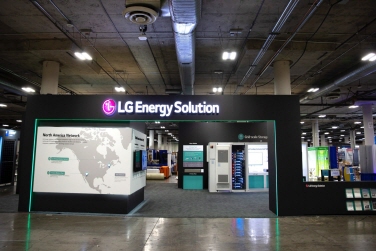The global COVID-19 pandemic has brought the importance of corporate risk management to the fore. As a result, many companies have given more attention to sustainability. Nowadays, the seriousness of environmental pollution and climate crisis is indisputable worldwide. Therefore, any company that neglects these areas of concern is evaluated as lacking sustainability. In addition, with the broader spread of the idea that corporate social contribution and sound corporate governance positively impact sustainability, ESG management has emerged as an essential subject matter.

ESG stands for environmental, social, and governance, which are the non-financial elements of a company. ESG management is rooted in the belief that sustainable development is possible when corporate activities consider environmental friendliness, social responsibilities, and governance enhancement. As CSR (Corporate Social Responsibility) emphasizes a company’s ethical responsibility and social contribution, ESG focuses on sustainability and highlights practical, sustainable management, not just ethical management. This is why ESG is called a ‘new paradigm’ for corporate growth, not a short-term fad.
In response, LG Energy Solution began shifting to full gear towards ESG management to become an eco-friendly company that prioritizes the environment in its business activities, fulfills its social responsibilities, and creates sustainable value for the future.
LG Energy Solution established its ESG vision of “We CHARGE toward a better future” and announced specific management strategies.
LG Energy Solution’s ESG vision contains its ambition to create a sustainable and better future as a leader in the global battery industry. CHARGE stands for eight critical areas related to the environment, human rights, safety, and society, and four key enablers that will serve as the foundation to the transformation.
CHARGE has identified four key areas: climate action, closed-loop recycling, human capital, and responsible supply chain management. LG Energy Solution has set specific tasks to actively manage these areas, including converting to 100% renewable energy by 2030, reusing spent batteries, eliminating human rights risks, and establishing a clean and transparent supply chain that takes the environment and human rights into account. Here, we introduce seven critical tasks that LG Energy Solution has set forth, considering timeliness and importance.

1. Establishing and managing mid-to-long-term greenhouse gas reduction goals: Achieve carbon neutrality by 2050
Carbon neutrality means emitting net-zero greenhouse gas, the main culprit for global warming, through various carbon reduction activities. As a leading environment-friendly battery company, LG Energy Solution plans to reduce greenhouse gas emissions to zero by 2050. It aims to phase out carbon emissions by actively converting to renewable energy, boosting energy efficiency through process improvement, and introducing highly efficient facilities.
2. Achieving renewable energy transition or RE100 (Renewable Electricity 100%): Apply RE100 to all global business sites by 2030
RE100 is an international campaign for companies to use renewable energy such as wind power or solar power to supply 100% of their electricity by 2050. As a leading eco-friendly energy company, LG Energy Solution strives to achieve RE100 by 2030, 20 years earlier than RE100’s goal. Its business sites in Poland and the United States have already fully converted to renewable energy by adopting Green Pricing1) and purchasing REC2). LG Energy Solution plans to gradually expand renewable energy in its Korean and Chinese business sites.

3. Establishing a global recycling business model: Complete the establishment of closed-loop recycling by 2025
By 2025, LG Energy Solution plans to create a circular battery economy in all its business sites worldwide by establishing a closed-loop recycling system that covers the entire supply chain from raw materials of batteries to production, consumption, and disposal. The Chinese plant has already established a resource circulation system that sells spent batteries or scraps (wastes) generated during the battery production process to recycling companies and use extracted nickel or cobalt to manufacture cathode materials. In addition, Ultium Cells, a joint venture with General Motors (GM), signed a contract to recycle spent batteries with Li-Cycle, the largest battery recycling company in North America. Through this partnership, LG Energy Solution plans to recycle various raw materials in spent batteries that retire during the cell production process.
4. Diversifying management with a global perspective: Run an HR system based on diversity
LG Energy Solution hires talents from various countries, including Korea, the US, China, and Poland. As of the end of June 2021, 8,300 and 16,400 LG Energy Solution employees were working at home and abroad, respectively. As a global company, LG Energy Solution plans to derive management indicators related to diversity by understanding how its employees view nationality, race, gender, and generation this year. The company plans to build an organizational culture where its employees can demonstrate their talents despite their race or gender.

5. Strengthening the product eco-friendliness management system: Achieve 100% product eco-friendliness by 2023
LG Energy Solution adopted the Chemical Assurance and Regulation Management System (CHARMS), which covers the entire process from purchasing, warehousing, using, and disposing of chemicals. Its goal is to prevent environmental safety-related accidents and achieve compliance operations throughout the process. LG Energy Solution is expecting to secure 100% eco-friendliness for its local and foreign battery materials by 2022 and battery products by 2023.
6. Improving the ESG risk management system for supply chains: Secure over 90% of ESG low-risk group partners
The rapidly growing battery market is raising various issues related to the supply of raw materials. Ethical and transparent supply chain management is now seen as a prerequisite in the battery industry. When choosing new partners, LG Energy Solution verifies the adequacy of its supply chain management system from the beginning. It preemptively manages any potential supply chain issues by regularly evaluating and monitoring risk improvements. In addition, LG Energy Solution plans to secure more than 90% of the ESG low-risk group partners by 2030 by strengthening monitoring and support for ESG status in the supply chain.
7. Reducing the risk of environmental safety-related accidents in the workplace: Target zero major accidents
LG Energy Solution strives to achieve zero environmental or safety accidents. To this end, it has conducted an intensive inspection on processes that could potentially cause severe accidents in the first half of 2021. During inspections, the company works to improve the risk factors identified. In addition, it plans to develop DX (digital conversion) technology to prevent such accidents by 2023 and apply the technology to its business sites.

ESG management is an opportunity to explore new businesses and set a new milestone for creating sustainable social values, such as coexistence and co-prosperity, and building a virtuous cycle in the battery industry ecosystem. LG Energy Solution had set 2021 as the first year of ESG and race towards implementing ESG management that could innovate life as we know it.
To this end, LG Energy Solution established an ESG committee in June 2021 to plan ESG management activities and analyze performance. Also, LG Energy Solution is striving towards sustainable management by preparing countermeasures for ESG-related risks. In addition, in August 2021, the first ESG report was published. The 114-page report contained the company’s ESG performance and vision, including the transition to RE100 as a leading eco-friendly energy company and responsible supply chain management. LG Energy Solution will continue to create ESG competitiveness beyond market and customer expectations.
1) Green Pricing: This system allows the selling and supplying of electricity generated with renewable energy at a green premium to companies and consumers who voluntarily purchase the electricity.
2) REC(Renewable Energy Certificates): This certifies that energy was produced and supplied using renewable energy facilities and can be sold to renewable energy suppliers.





